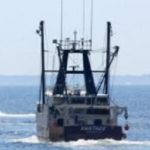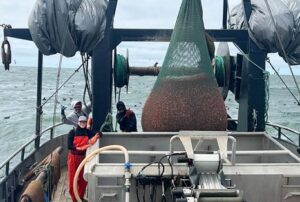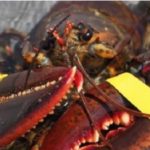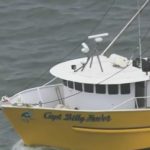Tag Archives: Nate Phillips
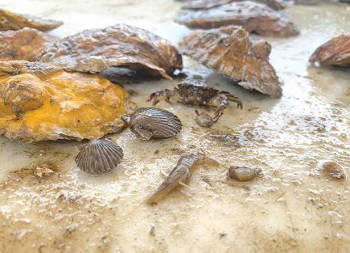
Peconic Bay Scallop: After disappointing seasons in 2019, ’20, the outlook remains bleak
Last week, Steve Tettelbach, head of Cornell Cooperative Extension’s Peconic Bay Scallop Restoration Program, finished up a series of dives at the seven sites from Flanders to Montauk,,, “At six of our seven sites, the average density declined by 64% to 99% between May and late August, and the highest die-off occurred at the three sites with the highest initial densities in spring 2021,” Mr. Tettelbach said. Only the site in Napeague Harbor saw an increase in bay scallop numbers over the course of the summer. Bay scallops in New York waters are supposed to live about 18 months. Why have bay scallops in the Peconic Bay system died months prematurely en masse for three years in a row? >click to read< 16:04

The Work We Do: Nate Phillips, Alice’s Fish Market
[I’m] Nate Phillips, Alice’s Fish Market. It’s a family-owned business for 26 years. I grew up in the fishing industry. I was actually brought home from the hospital straight to the boat. Before they even brought me home, it all kind of started there. You get to see stuff that a lot of people don’t. We do a lot of farmer’s markets. The people that come to those farmer’s markets, they want fresh seafood. >click to read<
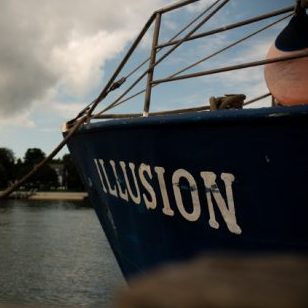
Capt. Mark Phillips and the Illusion, the last of its kind
‘It’s not fish you’re buying – it’s men’s lives.’’ – Sir Walter Scott. The Predator sits dockside in Greenport, behind Alice’s Fish Market, a rusting hulk of a fishing trawler, 75 feet long and with no certain future to speak of. It is Mark Phillips’ boat, but he is away most days trolling offshore for squid in his other trawler, the Illusion. “It is not going to sea anytime soon,” Phillips said by cellphone, an edge of weary disgust in his voice. “The Predator’s days have come and gone.” The Illusion was dragging for squid near Nantucket on a hot day in mid-July. Phillips had started that week near Jones Inlet on western Long Island, but the ocean had heated up and the squid, which don’t like warm water, were scarce, so he moved the Illusion farther east in pursuit of success. >click to read<09:41
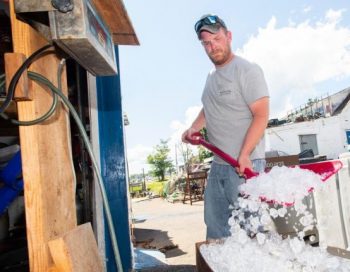
Fishing is a family business – Three couples know everybody needs to pitch in to make a living
Long Island’s fishing families know how to adapt. They have to if they want to keep making their living from the water. Many have succumbed to the sea of quotas and regulations. Fewer and fewer are hanging on. In the past eight years, the number of commercial food fish licenses has dropped by double digits —11 percent — from 1,030 in 2018 to 916 so far this year, state data show.,, Most of the families still in commercial fishing run mom-and-operations, Brady said. “Some can go back 15 generations, some have been here since the ’70s,” she said, “and some are just starting out” The Phillipses, the Osinskis, and the Lofstads. >click to read<08:51

Huge scallop harvest, growth in oyster farming boost East End
Since the scallop season opened with a strong start in early November, fish dealers have been buying hundreds of pounds a day. The surge in volume is keeping fishermen, shuckers, wholesalers and seafood store owners busy, but it has also pushed prices down. Scallops are selling for less than $20 a pound, in some cases as low as $15, down from around $35 last year.,, Nate Phillips, whose family owns Alice’s Fish Market in Greenport, has been supplying the shop with all the bay scallops it can sell. Each morning he takes his small fishing boat loaded with metal dredges and a sorting table to state waters not far from his Greenport shop to catch his daily quota of 10 bushels.Video, click here to read the story 16:26
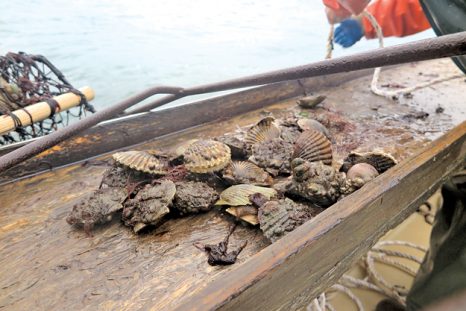
Rescuing a regional treasure: Biologists, baymen bringing back Peconic Bay scallops
Last week the veil was lifted on a question at the center of the East End’s culture as well as its economy: How many Peconic Bay scallops made it through algae blooms, whelk attacks, underwater landslides and onto dinner tables this season? Sunrise on Monday, November 6 marked the opening of New York State waters for fishing this sweet local delicacy, and by 7 a.m. it was clear there were plenty of scallops to be harvested. There are many ways for a scallop to die before its time, and Long Island University biologist Stephen Tettelbach, is familiar with all of them. click here to read the story 13:34

































